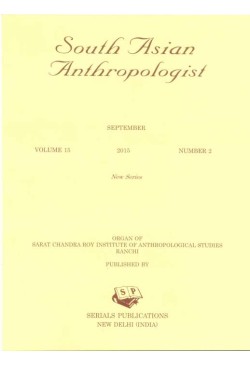
South Asian Anthropologist
Frequency :Bi-Annual
ISSN :0257-7348
Peer Reviewed Journal
A Tribute to Professor Paramananda Dash Sharma: The Founder Editor
Reminiscences: Loving Memories of our Beloved Teacher Dr. Tulika Sen
Nabakalebara Ceremony of Lord Jagannatha and the Hindu Doctrine of Rebirth: An Analysis
Rice Culture in the Little Traditions of Odisha
Participatory Action Research for Sustainable Tribal Livelihood: An Eco Chain Approach with Saptapadi
The Social Experience of Cinema-going in Single Screen Theatres: An Ethnography of Audiences in an Indian Small Town
Socio-Economic Status of Bengali Refugee Community: An Empirical Study in Rehabilitated Colonies of Chhattisgarh
Assessment of Multi-Drug Resistant Tuberculosis Patient’s Satisfaction Level, Their Needs and Expectation: A Hospital Based Study in Bangladesh
Status of Health of Under-5 Children in Four Metro Cities in India: A Comparative Analysis Using the Latest NFHS Data
Irular Tribe of Tamil Nadu: An Anthropo-Nutritional Status Evaluation
A Relook into the Mission of the Man Behind Vidyasagar University: An Autoethnography